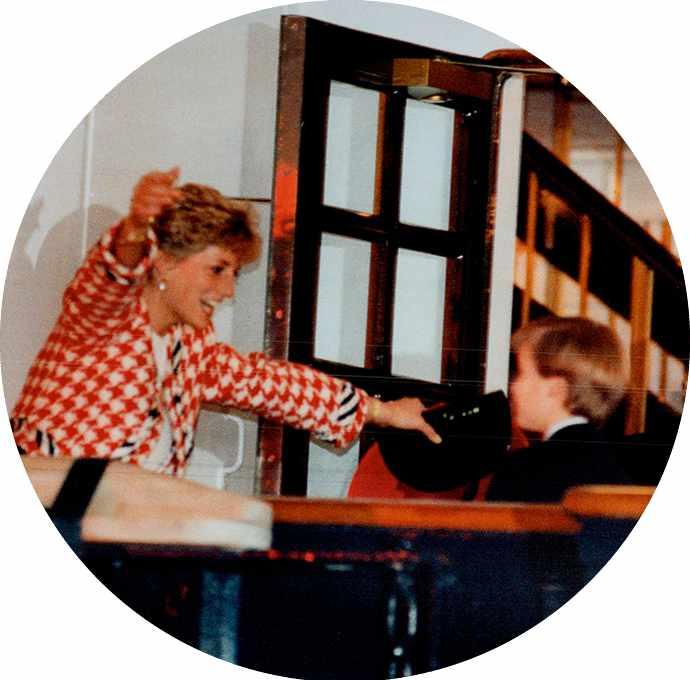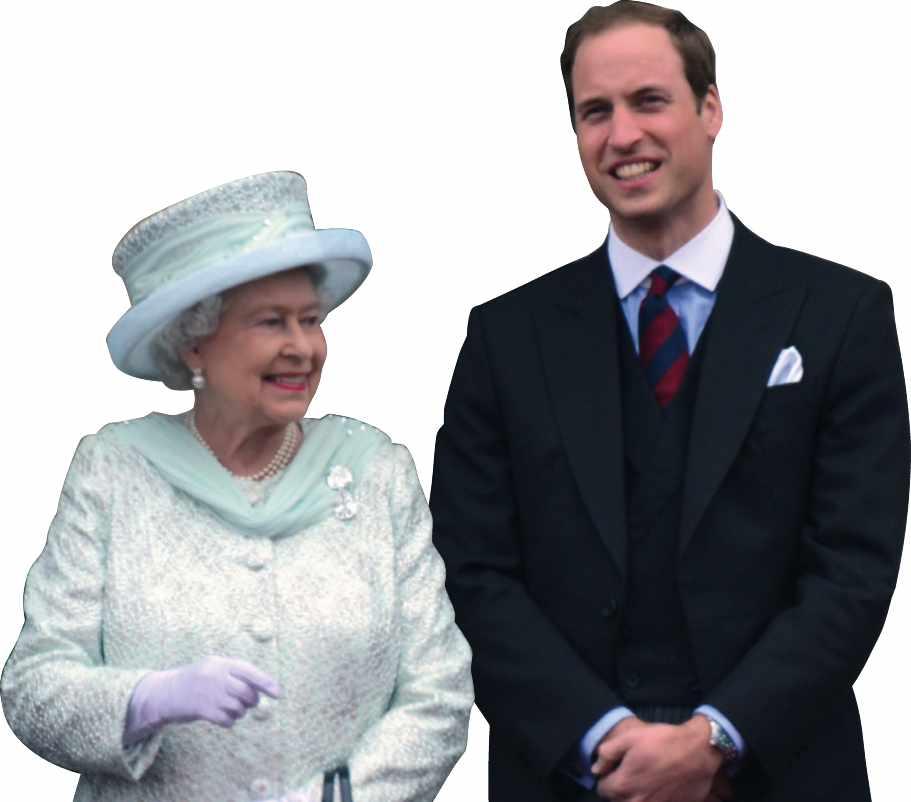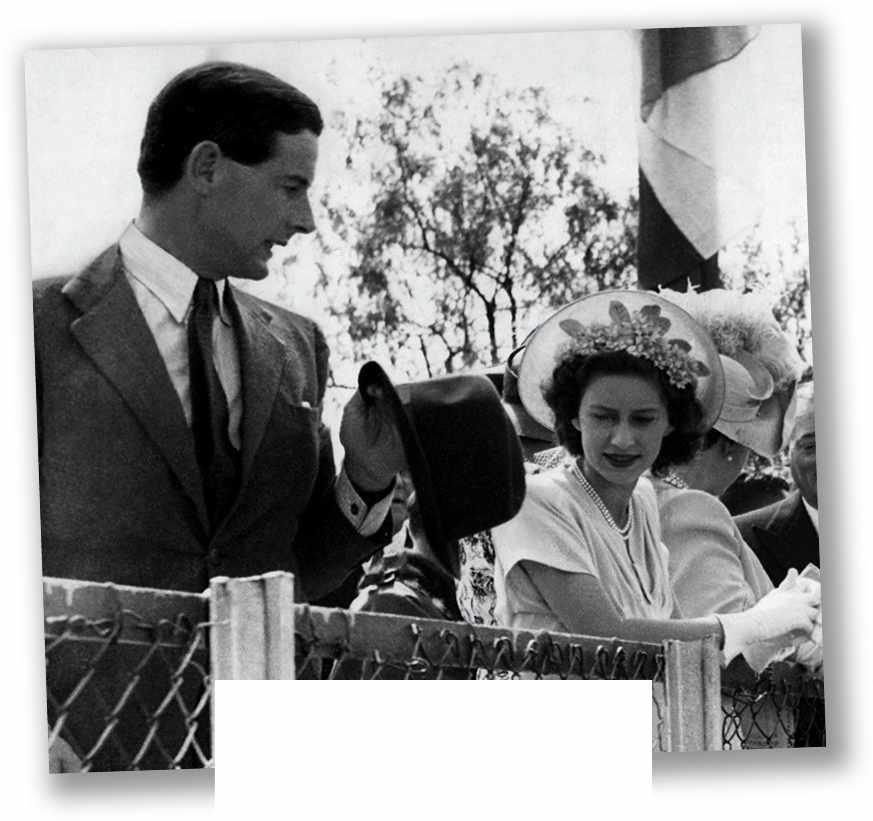
13 minute read
The love behind the throne
ueen Victoria hated babies. Though she had nine of her own, she despised being pregnant, viewed breastfeeding with disgust and found her offspring “ugly” and “froglike”. Maternal she was not. Fortunately, attitudes towards royal children have since changed dramatically. Following the christening of Prince Charles in December 1948, the then Princess Elizabeth wrote to a friend, saying of her four-week-old son: “Don’t you think he is quite adorable? I still can’t believe he is really mine.” Gone is the belief that children should be seen and not heard, and with each new generation modern philosophies have been embraced. Now a mother of three, the Duchess of Cambridge – Catherine Middleton, wife of Prince William – carries out a plethora of royal duties but, unlike many of her predecessors, has been granted time and space to focus on raising her young family. Given her position as wife of the second in line to the throne, her good fortune is in stark contrast to that of the Queen, whose early years of motherhood were rife with reminders of her eventual destiny. Elizabeth has allowed William and Catherine to strike a more even balance between public roles and private lives – a luxury both she and Diana were denied.
It’s been 69 years since Queen Elizabeth II took her coronation oath in the hallowed halls of Westminster Abbey. As head of the world’s most famous family, her commitment to service and duty has been widely lauded, but what many fail to consider is the personal cost that comes with holding the highest position in the land for seven decades. Though George VI had been ill for many years, his untimely death in February 1952 at the age of 56 threw Elizabeth, a young mother of two small children, into a lifetime of obligation. Suddenly beholden to a regimented and inflexible royal calendar, quality time with her children was limited, at best. The nature of her birth has afforded the Queen enormous privilege, but her personal sacrifices have rarely been recognised. The first of many began with the death of her father, a man whom she adored.
nburdened by the stresses imposed
Uon his older brother, the heir apparent and future King Edward VIII, the Queen’s father Prince Albert, Duke of York (later King George VI), was an attentive and hands-on parent who took great delight in his time at home with his wife and daughter. “You don’t know what a tremendous joy it is to Elizabeth and me to have our little girl,” he wrote to his mother shortly after the princess’s birth in 1926. Four years later the Yorks welcomed their second child, Princess Margaret Rose. The most senior royal baby to be born in Scotland for more than 300 years, she was the Queen’s only sibling. Happy to dispense with their nanny, the royal parents themselves oversaw bath time and read their daughters bedtime stories. According to Marion Crawford, the princesses’ governess who joined the royal household in 1933, mornings always got off to a “raucous” start. Whenever they were in residence, the girls began each day by running to their parents’ bedroom, from where shrieks of laughter could be heard. It was a tradition that continued until Elizabeth’s wedding day. The Yorks’ life was an idyllic one, but it was to change dramatically when, on 11 December 1936, Edward VIII announced his decision to abdicate after a reign of only 325 days. Now first in line to the throne, and bound by a new set of responsibilities, it was clear that Elizabeth would find it difficult to emulate her childhood for her own family.
Princess Elizabeth married Prince Philip of Greece and Denmark at Westminster Abbey in November 1947. A year later their first child, Prince Charles Philip Arthur George, was born at Buckingham Palace. His sister, Anne, followed in August 1950. Outwardly, the royal family appeared to be a contented one, but a gruelling schedule often led to weeks, even months apart. Rarely able to
spend more than half an hour with her family prior to each day’s engagements, Elizabeth returned home each evening for a brief period of playtime before bathing her children and putting them to bed. Prince Charles has spoken often of his unhappy childhood, which was softened only by the nurturing relationship he shared with his nanny, Mabel Anderson, who arguably filled the void left by his duty-bound mother. Such were the demands on the newly installed figurehead who had assumed the throne during what was a largely male-dominated age. rchive newsreel from 1951 shows
Aa young Prince Charles accompanying his grandmother and aunt to Euston railway station to greet his parents on their return from a tour to Canada. As Elizabeth steps off the train she warmly embraces her mother before kissing the top of her son’s head; he seems to barely recognise her. Jumping forward 40 years, images of the Prince and Princess of Wales are strikingly different. At the conclusion of their visit to Canada in 1991, the couple raced up the gangplank to HMY Britannia for a joyful reunion with their sons, Princes William and Harry. Charles and Diana both threw their arms around the boys in a very public display of affection.
It is unfair, however, to compare across the generational divide. In 1951, Princess Elizabeth was required to maintain the dignity expected of one in her position. Four decades later, changes in expectations and attitudes to royalty in general resulted in a public delighted to be afforded glimpses of loving relationships between royal parents and their offspring. By the time Princes Andrew and Edward came along in 1960 and 1964, respectively, the Queen, then firmly established on the international stage and more confident in her position, was given a second chance. Though her sense of duty remained
undiminished, she was better equipped to embrace her role as a mother. Home movies released in the 2010s, along with footage filmed for the 1969 fly-on-the wall documentary Royal Family, revealed the Queen as she had never been seen before: tickling a baby Prince Charles, flipping through family Princess Diana runs to hug her photo albums and buying ice cream for the young sons William and Harry, children in the local village shop. Outward putting aside protocol, during a visit to Toronto in 1991 appearances may suggest a woman lacking in maternal warmth, but behind palace walls she seems to be quite the opposite. In 1983, Charles and Diana opted to take their ninemonth-old son, Prince William, on a six-week tour to Australia and New Zealand. Their “refreshing approach” to royal protocol subsequently received widespread praise. Comparisons between the “detached” Queen, who embarked on a six-month tour of the Commonwealth in 1953–54 without her children, and the new princess who “defied convention” were rampant, but again the comparison is impossible to justify. Thirty years had passed between tours, during which time advances in modern aviation made travel significantly speedier. Deference was a thing of the past and, popular as she was, Diana was merely a princess, not the Queen. When William and Catherine set off on their own tour of Australia and New Zealand in 2014, they took their baby, Prince George, but – unlike Charles and Diana – their schedule was such that they spent only two nights away from him. The Queen’s experience within the royal fishbowl, and the lessons learned during the Diana years, have helped inform her approach to family life. Contrary to popular belief, she was always very fond of Diana and consistently supported her daughter-in-law. The Queen may not have identified with Diana’s touchy-feely style but she recognised how successful it was, and saw that Diana was just what the institution needed to appeal to a new generation. In 1981, as media interest in Charles’s bride intensified, the Queen held a meeting at Buckingham Palace with Fleet Street newspaper editors. She implored them to allow Diana some semblance of a private life and to “ease ´
Appearances may suggest a queen lacking in maternal warmth, but the truth is quite the opposite
UPS AND DOWNS The royal family watch the flypast for the RAF centenary in July 2018. Included in the gathering are Harry and Meghan, who stepped down from their royal duties in 2020
off”. The late William Deedes, former editor of The Daily Telegraph, subsequently recounted, “I was in a small group with the Queen when she observed: ‘It’s hard on a girl if she can’t go to the local sweet shop without being cornered by photographers.’ The then editor of the News of the World, Barry Askew, said rather plaintively: ‘Why couldn’t she send a footman for the sweets?’ The Queen replied: ‘I think that is the most pompous remark I have ever heard in my life.’” Just two months later, Britain’s tabloids printed paparazzi photographs of a visibly pregnant Diana in a bikini while on holiday in the Bahamas with Charles. The palace’s plea had fallen on deaf ears.
Induction into the royal firm has been difficult to navigate for all of the Queen’s in-laws. Her children’s marriages each came about as 24-hour news stations began to operate, and the royal soap opera of the early nineties further fuelled the media’s insatiable appetite for gossip. As one who prefers to let each family member find their own unique path, the Queen chose to lead by example rather than telling them what to do. In the selfdeprecating manner for which she’s famed, Princess Anne previously said of her mother: “As all mothers, she has put up with a lot – but we’re still on speaking terms, so that’s no mean achievement.”
For the family, the Queen represents a well-respected role model, albeit one with strong opinions when things go awry. Prince William once said of her: “She’s a very good listener. If you do ever have problems, you can share them with her and she’ll listen and try to help… but she won’t ever tell you what to do. Your successes are your successes, and your failings are your failings.” He was quick to add that it’s clear when the Queen is displeased. “I’ve been in her bad books several times,” he said in jest. “I’ve seen how the corgis get told off when they’re in trouble… I don’t want to go there.”
The Queen has long been a mentor to William, and the two are very close. While he was at Eton he regularly popped over the bridge to Windsor Castle for afternoon tea with his grandmother when she was in residence, and he continues to seek her counsel. Following the announcement of his engagement to Catherine Middleton in 2010, he was handed a wedding guest list with the names of 777

It’s as simple as that,” says Prince Harry

dignitaries, governors and notables, none of whom he knew. He called the Queen and said: “Do we need to be doing this?” After telling him to “bin” the list, she said: “Start with your friends first and then go from there.” But there was one area in which his grandmother refused to be swayed, as William told royal biographer Robert Hardman: “I wanted to decide what to wear for the wedding, but I was given a categorical: ‘No, you’ll wear this!’” The outfit in question was the ceremonial uniform of the Irish Guards, of which he had recently been made honorary colonel. Knowing the scarlet red would look good on camera, the Queen’s decision was a wise one.
ccording to Prince Harry, “Behind
Aclosed doors, she’s our grandmother. It’s as simple as that.” Nonetheless, the pair’s relationship has been more complex of late. Upon Harry and Meghan’s decision to “step back” from their royal duties in January 2020, the Queen was tasked with navigating the couple’s transition to civilian life. In a statement subsequently released she said: “My family and I are entirely supportive of Harry and Meghan’s desire to create a new life as a young family. Although we would have preferred them to remain fulltime working Members of the Royal Family, we respect and understand their wish to live a more independent life as a family while remaining a valued part of my family.”
The demands on individual schedules means the royals are routinely required to make appointments in order to see each other, but the practice is merely a formality, not an indication of a family removed and out of touch. It is, however, what makes their Christmases at Sandringham a time to be cherished. Like any family, they have their share of festive traditions, but the highlight is often the personal or jokey gifts exchanged on Christmas Eve. In her first solo interview, for a television documentary marking the Queen’s 90th birthday, the Duchess of Cambridge said: “At Sandringham for the first time at Christmas… I was worried what to give the Queen as her Christmas present. I was thinking: ‘Gosh, what should I give her?’ I thought, ‘I’ll make her something’,” she continued, “which could have gone horribly wrong, but I decided to make my Granny’s recipe of chutney. I was slightly worried about it, but I noticed the next day that it was on the table. I think such a simple gesture went such a long way for me. I think it just shows her thoughtfulness and her care in looking after everybody.”
Aware of the enormity of Catherine’s future role, the Queen has striven to help the young duchess adjust to life in the spotlight since her 2011 marriage to Prince William. In March 2012, she and the Duchess of Cornwall were invited to accompany the Queen on an official engagement to high-end food store Fortnum and Mason. It was the first time the Queen and two future consorts had carried out an official “working” engagement together, and the day proved to be a great success.
Throughout her reign, the Queen has resolutely put duty first but in 1997, following the death of Diana, the welfare of Princes William and Harry was her sole concern. Years from now, historians will likely say that the week Diana died was the only time during Elizabeth’s reign when she resolved to put her family above all else. In the days leading up to Diana’s funeral, the Queen chose to stay at Balmoral to offer comfort to her grieving grandsons. Despite the deafening cries of rage from the press criticising its absentee monarch, she remained steadfast.
A quarter of a century on, it is easy to understand why she stood her ground but, for a public used to turning to its Queen in times of national crisis, it seemed inconceivable that she didn’t return to London immediately. Though one can only speculate over her reasons, she perhaps saw it as an opportunity to right the wrongs of early motherhood, when the demands of queenship meant that she wasn’t able to be present for her own children during their formative years.
Now in her tenth decade, the Queen is increasingly relaxed in her role. A proud mother of four, and grandmother to eight, in September 2021 she welcomed her twelfth great-grandchild, Princess Beatrice’s daughter Sienna. “Her Majesty” to the masses, she’s more commonly known to the newest generation of royals as “Gan-Gan” – the same nickname she used for her own grandmother, Queen Mary. Wherever her subjects are in the world, they can look to the Queen and learn from a life impeccably well lived. But it was Prince Harry who once said: “I can go to her for advice and bend her ear over all the experience she’s had over the years.” At the end of the day, isn’t that what grandmothers are for? n
The Queen is particularly close to William, who would pop over to Windsor to have afternoon tea with her










